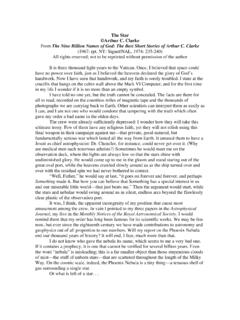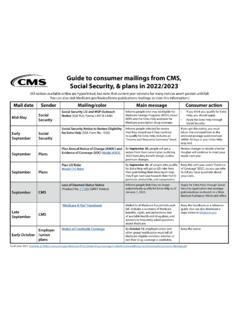Transcription of Name: AP Language - Covington Catholic High School
1 Name: _____ Ms. Baulch AP Language An Annotation Guide Note-Taking vs. Annotation Most serious readers take notes of some kind when they are carefully considering a text, but many readers are too casual about their note-taking. Later they realize they have taken notes that are incomplete or too random, and then they laboriously start over, re-notating an earlier reading. Others take notes only when cramming for a test, which is often merely "better than nothing.". Students can easily improve the depth of their reading and extend their understanding over long periods of time by developing a systematic form of annotating.
2 Such a system is not necessarily difficult and can be completely personal and exceptionally useful. First, what is the difference between annotating and "taking notes"? For some people, the difference is nonexistent or negligible, but in this instance I am referring to a way of making notes directly onto a text such as a book, a handout, or another type of publication. The advantage of having one annotated text instead of a set of note papers plus a text should be clear enough: all the information is together and inseparable, with notes very close to the text for easier understanding, and with fewer pieces to keep organized.
3 Think of annotations as showing your work while you read just as you sometimes show your work in a math problem. You are showing what you are thinking while you read and analyze . and thinking is a word-based activity, not just a nebulous puff of energy. If you can't articulate your thoughts, then you have to question if you know what you're thinking. Thinking is how you connect to the text. This, of course, requires ACTIVE participation with the text, engaging your mind while you read, not skimming the page. Listening to your iPod or the TV can split your focus so that you don't have as much of a connection with the text.
4 Marking important sections can also be helpful in locating them quickly in discussions. What the reader gets from annotating is a deeper initial reading and an understanding of the text that lasts. You can deliberately engage the author in conversation and questions, maybe stopping to argue, pay a compliment, or clarify an important issue much like having a teacher or storyteller with you in the room. If and when you come back to the book, that initial interchange is recorded for you, making an excellent and entirely personal study tool.
5 Criteria for Successful Annotation Using your annotated copy of the book six weeks after your first reading, you can recall the key information in the book with reasonable thoroughness in a 15- to 30-minute review of your notes and the text. Why Annotate? Annotate any text that you must know well, in detail, and from which you might need to produce evidence that supports your knowledge or reading, such as a book on which you will be tested. Don't assume that you must annotate when you read for pleasure; if you're relaxing with a book, well, relax.
6 Still, some people let's call them "not-abnormal" actually annotate for pleasure. Don't annotate other people's property, which is almost always selfish, often destructive, rude, and possibly illegal. For a book that doesn't belong to you, use adhesive notes for your comments, removing them before you return the text. Don't annotate your own book if it has intrinsic value as an art object or a rarity. Consider doing what teachers do: buy an inexpensive copy of the text for class. Tools: Highlighter, Pencil, and Your Own Text 1.
7 Yellow Highlighter A yellow highlighter allows you to mark exactly what you are interested in. Equally important, the yellow line emphasizes without interfering. Some people underline, but underlining is laborious and often distracting. Highlighters in blue and pink and fluorescent colors are even more distracting. The idea is to see the important text more clearly, not give your eyes a psychedelic exercise. While you read, highlight whatever seems to be key information. At first, you will probably highlight too little or too much; with experience, you will choose more effectively which material to highlight.
8 2. Pencil A pencil is better than a pen because you can make changes. Even geniuses make mistakes, temporary comments, and incomplete notes. While you read, use marginalia marginal notes to mark key material. Marginalia can include check marks, question marks, stars, arrows, brackets, and written words and phrases. Use the following system: Use the following format: Inside Front Cover: Major character list with small space for character summary and for page references for key scenes or moments of character development, etc. Inside Back Cover: Build a list of themes, allusions, images, motifs, key scenes, plot line, epiphanies, etc.
9 As you read. Add page references and/or notes as well as you read. Make a list of vocabulary words on a back page or the inside back cover, if there's still room. Possible ideas for lists include the author's special jargon and new, unknown, or otherwise interesting words. Beginning of Each Chapter: Provide a quick summary of what happens in the chapter. Title each chapter or section as soon as you finish it, especially if the text does not provide headings for chapters or sections. Top margins: provide plot notes a quick few words or phrases that summarize what happens here.
10 Go back after a chapter, scene, or assignment and then mark it carefully. (Useful for quick location of passages in discussion and for writing assignments). Bottom and Side Page Margins: Interpretive notes (see list below), questions, and/or remarks that refer to meaning of the page. Markings or notes to tie in with notes on the inside back cover. Interpretive Notes and Symbols to be used are: Underline or highlight key words, phrases, or sentences that are important to understanding the work. Write questions or comments in the margins your thoughts or conversation with the text.







